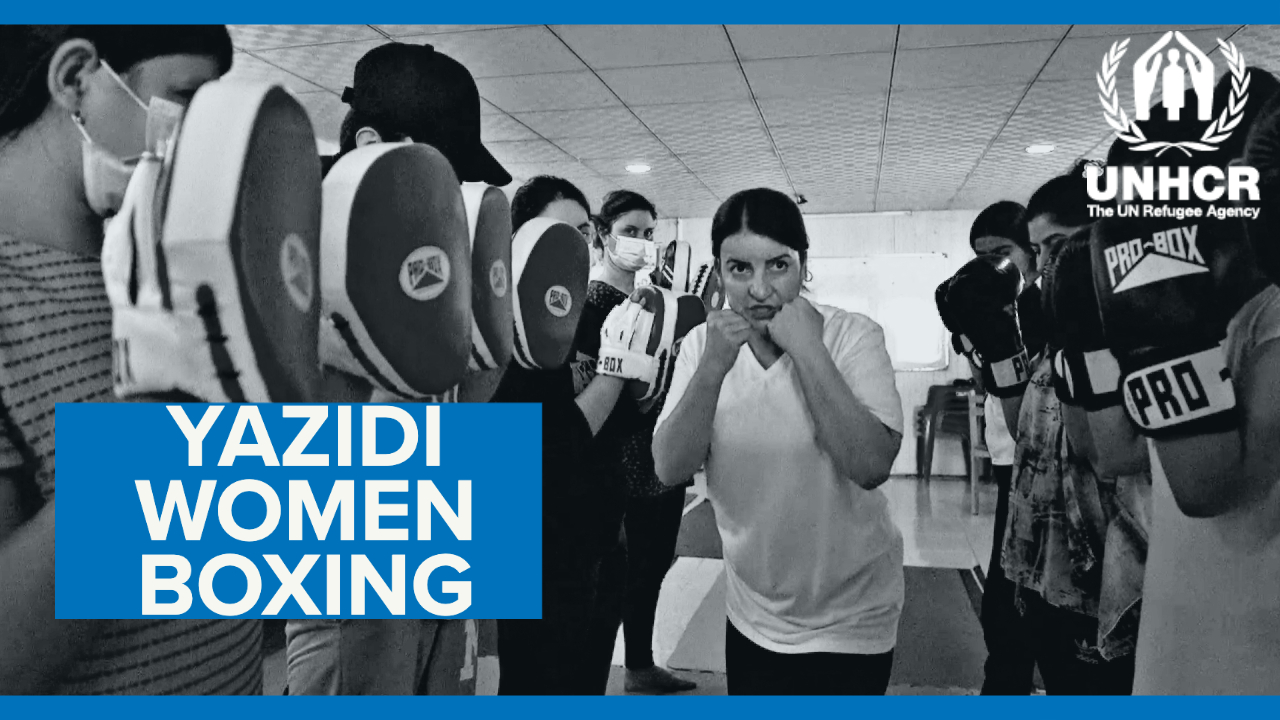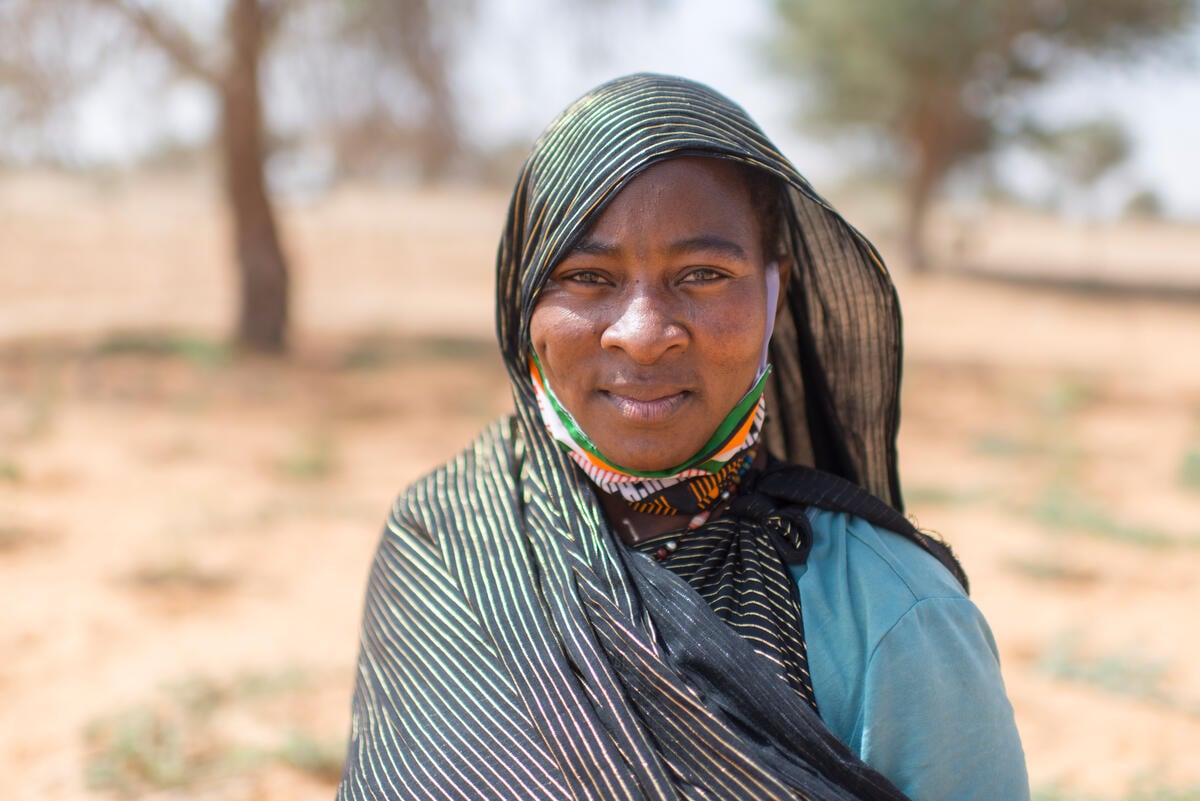Q&A: Former ocean yachtsman puts refugee women in the picture
Q&A: Former ocean yachtsman puts refugee women in the picture

GENEVA, February 27 (UNHCR) - Titouan Lamazou was born in Morocco and grew up beside the Mediterranean in Tunisia and the French city of Marseille, so it is perhaps fitting that the Frenchman became a top-class yachtsman. He was one of the world's leading long-distance sailors in the 1980s and early 1990s, learning much of his craft under the legendary Eric Tabarly. In 1990, Lamazou entered the record books as the winner of the first Vendée Globe, a single-handed, non-stop round-the-world yacht race. A fellow Frenchman has just won the sixth version, with two women in the top six. Three years after Lamazou's triumph, he gave up full-time sailing and turned to art and photography, travelling the world to capture the female form on canvas and film. They included internally displaced and refugee women. Lamazou's desire to help brought him in touch with the UN refugee agency and he has discussed cooperation with UNHCR's Women Leading for Livelihoods (WLL) project, which aims to promote the social and economic independence of displaced women around the world. Lamazou talked to UNHCR Web Editor Haude Morel during a recent visit to Geneva. Excerpts from the interview:
What made you quit sailing and turn to art and photography?
There is a common thread in my life - it is the journey to try and see what lies over the horizon. I was originally an artist.... I knew almost nothing about life at sea, but I was attracted by maritime horizons and I hitched a ride [on a yacht] to the Caribbean. For my [then compulsory] military service, I sailed for two years with Erik Tabarly, the famous French navigator and winner of many offshore races who agreed to take four apprentices from the marine corps.
But after I had won a world championship, several races and the first Vendée Globe, I lost the competitive spirit and the need to push myself to the limit and so I decided to pick up my paintbrush.
How did your relationship with UNHCR start?
To start with, I focused on keeping a travelogue while moving from country to country, but bit by bit I became more interested in advocacy issues. This militant aspect of my work brought me in contact with people in the field from UN organizations such as UNHCR and the World Food Programme and non-governmental organizations like Amnesty International.
I met UNHCR thanks to a friend based in Addis Ababa who was involved in the running of refugee camps at the Somali border. I was interested in doing portraits of women who were victims of forced migration.... I worked with UNHCR in Colombia, where I made portraits of internally displaced women in the southern region of Putumayo.
UNHCR also helped me in Jalalabad in eastern Afghanistan and in Africa, where I made portraits of uprooted people in Chad and South Sudan. I was in Nairobi the day that John Garang [leader of the rebel Sudanese People's Liberation Army] announced [in January 2005] that peace had been forged with the government. I also visited camps in Uganda, then I crossed into the Kivu provinces [in Democratic Republic of the Congo] and made my way down to Bukavu. I worked with Tutsi and Hutu refugees and visited the Gulu area of northern Uganda, where the [rebel] LRA [Lord's Resistance Army] had significant influence at the time.
How do you choose the displaced women you paint and photograph?
The ways I have met the women who are my portrait subjects are as numerous as the diversity of the portraits. I met some of them in the streets. In some countries where conditions were difficult, I received help from expatriate staff working with organizations such as UNHCR, WFP [World Food Programme], UNICEF [UN Children's Fund], Amnesty International and others. For example, I asked the MONUC [UN peacekeeping force in the DRC] representative in North Kivu for help and the next day I was able to meet around 70 internally displaced women who have been leading efforts to combat sexual violence.
I soon discovered that there are women with notable leadership qualities everywhere in the world who set up womens' associations - even in [male-dominated] places like Afghanistan.
In 2006, you set up an association to help such aid organizations run by forcibly displaced women. Tell us a bit about Lysistrata.
The main aim of the association is to help people help themselves. Of course, we can't change the situation in a place like the [Democratic] Republic of the Congo, but at least we can concretely help its people. It is an extension of my work that seems essential.
I founded this association two years ago. The projects are identified through the women I meet in the field. Certain projects involve populations who fall within the mandate of UNHCR.
We are now trying to find the resources to implement a few projects and I'll give you some examples of the kind of organizations we want to support. In the Kivus there are associations set up by female lawyers and nurses to help displaced women who have been raped and whose homes have been burned.
In the Kivus, there are internally displaced populations, women who have been raped and whose villages have been burned. A group of female lawyers and nurses created an association to help the victims of violence in the Republic of the Congo, including psychological, medical or legal support.... They have set up a secure shelter with dormitories.
I also visited a centre run by six nuns in Gulu which looks after girls who managed to escape from the LRA. They take in the girls and their children. They teach them seamstress skills and how to be housekeepers. These young girls were abducted when they were just children and the only skills they learned were how to clean a Kalashnikov. This centre serves as a model and the idea is to open more in other towns.
Is there any experience with refugees that really sticks in your mind?
In [the South Sudan town of] Rumbek, I did a portrait of a woman who had been displaced in Khartoum for 15 or 20 years. She came back to South Sudan when peace was forged, but most of her nine children stayed in the Sudanese capital. It took her sixth months to walk back to Rumbek.
It was a traumatic journey, but by the end of it she had 10 children. They were regularly attacked by rebels. One night when the caravan was attacked, she fled into the surrounding savannah. The next day, when the survivors were counting the bodies they found a small boy, aged maybe one-and-a-half or two. He was walking around on his and they could not find his parents. The woman agreed to take the boy, calling him "one o'clock" after the time of day that he was found. He is now about five years old.
As a former ocean yachtsman, what do you think when you read about migrants and refugees risking their lives to cross the Gulf of Aden to Yemen or the Mediterranean from Africa to Europe?
I can't imagine the sailing conditions. I always sailed in a vessel that was seaworthy. In Nouadhibou [on Mauritania's Atlantic coast], I did portraits of such migrants, including one who had failed in the attempt [to reach Spain's Canary Islands] and had to return. She was determined to try and cross again, telling herself: "God decides the day of our death."
The engines are not powerful enough and these pirogues are not suitable for sailing. That's why they leave at night, it's illegal. Migrants pay a lot of money for the crossing; there are 45 people per pirogue and they pay 1,000 or 2,000 euros per person. For someone like this woman, it takes time to save up the money and try again.
I was shocked recently after hearing about the captain of a fishing boat who was arrested after he had taken a detour to rescue a group of refugees or migrants who were in trouble on the high seas.... All sailors know that we are obliged to help one another. Even during a race like the Vendée Globe, if a boat breaks the others will help. In this case, the captain was condemned because he helped someone at sea. It's extremely shocking.
Do you have any new projects lined up with UNHCR?
The UNHCR office in Paris introduced us to the WLL [Women Leading for Livelihoods] project, which promotes economic and social independence for women.
We always like to work with associations that are already working on a local level. And so we came to Geneva to introduce our [Lysistrata] association to the WLL staff and to seek funds for our micro-projects implemented by local groups in the Kivus and in Colombia's Putumayo department. We would also like help with our project for the integration of Roma women in France.








